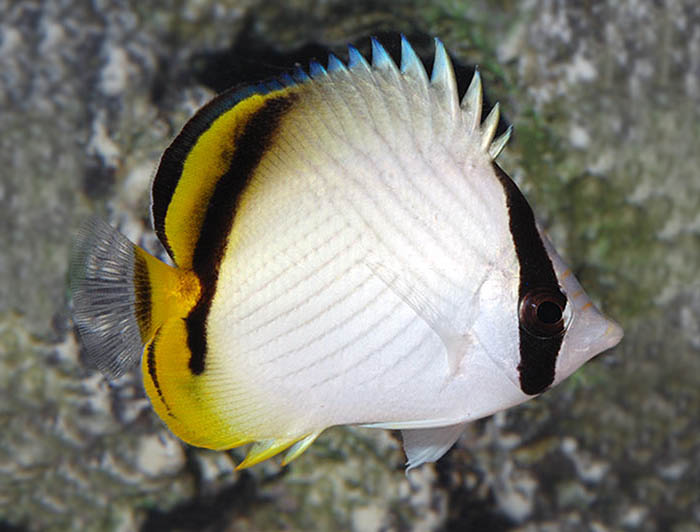Vagabond Butterflyfish
Vagabond Butterflyfish (Chaetodon vagabundus)
The Vagabond Butterflyfish (Chaetodon vagabundus) is a striking marine species found primarily in the Indo-Pacific region, spanning from the Red Sea and East Africa to the waters of the central Pacific. Recognized for its bold and intricate patterns, this fish features a silver-white body adorned with vertical black bars and a yellow dorsal fin, creating a vibrant contrast that allows it to blend into its coral reef surroundings. These fish are often seen in shallow lagoons and coral-rich coastal waters, where they forage for food.
A notable aspect of the Vagabond Butterflyfish’s behavior is its diet, which consists mainly of algae, coral polyps, and small invertebrates. Unlike some butterflyfish species that are obligate corallivores, meaning they feed exclusively on coral, the Vagabond Butterflyfish is more of an opportunistic feeder. This adaptability in its diet allows it to thrive in a wider range of habitats, including those with less coral cover, giving it an edge over other coral-dependent species.
In terms of social behavior, the Vagabond Butterflyfish is typically found in pairs, especially during breeding season. However, they can also be observed swimming solo or in small groups when foraging. They are relatively hardy fish in the wild but, like many other reef fish, are sensitive to changes in water quality, particularly in areas affected by coral bleaching or human activities. Because of their vibrant appearance and relatively peaceful nature, Vagabond Butterflyfish are also popular in the aquarium trade, though they require specific care to mimic their natural reef environment.
Their ability to adapt to a variety of marine ecosystems highlights their resilience, but as with many reef species, the Vagabond Butterflyfish still faces threats from habitat degradation, pollution, and climate change. Conservation efforts aimed at protecting coral reefs are crucial for ensuring the survival of species like this beautiful butterflyfish.
